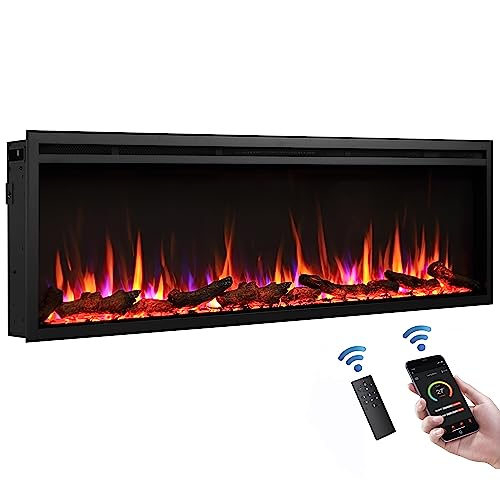
Fireplaces And Stoves
Add a review FollowOverview
-
Founded Date October 31, 1981
-
Sectors Class A Truck Driving
-
Posted Jobs 0
-
Viewed 828
Company Description
10 Sites To Help You Become An Expert In Fireplace Surround
Choosing a Fireplace Surround
The right surround can add personality to your living space regardless of whether you are using it for warmth or to enhance your aesthetics. It isn’t easy to select a fireplace surround that is safe and in line with the code.
These custom-built surrounds are built from non-combustible materials and adheres to the National Fire Code. They look fantastic in any home style.
Simple Concrete Surround with Slabs of Marble
A fireplace surround is an important focal point in rooms, and it can bring warmth and charm. It can be constructed from many different materials and crafted to match a variety of design styles. It’s important to consider the design of the room and the budget before deciding on the design of a fireplace surround.
Marble fireplace surrounds give an elegant look that is compatible with various styles of design. They can be paired with rustic woods as well as modern metals to create a unique, contemporary design. Marble is fairly easy to maintain and can withstand high temperatures, which makes it a great choice for a fireplace surround.
Stone is an elegant fireplace surround material that has a timeless look and works in many homes. It can be cut and etched to give it a more modern style or left untreated to give a more traditional look. Stacked stone veneers can be used to add texture and depth to a room.
Granite is a very sought-after option for modern surrounds for fireplaces. It’s durable and can be able to withstand heat well. It’s also available in a range of patterns and colors which means it can be used to create a variety of styles. Quartzite is a second option that can be cut and molded to fit a modern fireplace surround.
If you’re a DIYer the installation of a concrete fireplace surround might be within your capabilities. This project may seem daunting however it’s much easier than you think working with an expert and plan ahead.
A professional is also recommended when making a fireplace surround made of marble, as it requires special attention to avoid damage. A skilled carpenter can help avoid making mistakes that could cost you thousands of dollars in repairs.
If you plan to use tile as a fireplace surround, make sure that it is rated for high temperatures. This information is typically found on the label, or you can ask an employee in the home improvement store.
Leaning Frame Surround
The fireplace surround is a crucial design element that can transform the entire space. It’s not just visually appealing, but also serves a practical purpose. It protects the wall surrounding the fire place from deterioration and reflects heat back into the area. It is available in a variety of materials and can be adapted for any style or decor.
Choosing the right material for an inclined frame surround is key to creating an intentional aesthetic. Concrete is a good choice because it is durable and non-flammable. It also has a lot of visual appeal due to its natural texture and color. It is typically poured in molds that allow you to choose the possibility of making a unique shape.
Layers are crucial when creating your leaning frames. This helps the piece look deliberate and thoughtful rather than being thrown randomly on the wall or shelf. Leaning frames can be risky and should be avoided if you plan on displaying heavier objects like lamps or vases, put a small piece of rubber drawer liner underneath the base to keep them from falling or causing damage to surfaces.
If you’re using a concrete or marble surround, consider adding wooden boards on the bottom to help keep it in place. It will also help reduce the weight and prevent the object from moving as you enjoy a cup of wine or coffee in the fireplace.
Once you’ve chosen the material you’ll use for the frame’s leaning surround and frame, you can begin making the actual piece. Begin by marking the wall you’re building with the dimensions of the surround and use a saw to cut cleats on each of these marks. Make sure the top cleat is at least a foot shorter than the shelf.
Attach the brackets to the wall. Make sure the bolts go through the backerboard and into the stud. If necessary, pre-drill the screw holes. Then, temporarily clamp the mantel on the backer board. Attach the mantel using bolts for lag (2-4 bolts per stud). Be sure that the bolts are sufficient to cover 2/3 of the mantel depth plus the thickness of the backer board.
Black Firebox Surround
Fireplace surrounds serve both a decorative and functional purpose. They protect walls from heat damage, deflect some of the heat back into the room and can make a fireplace more of a focal point in a room. Metal and wood are the most commonly used materials used for fireplace surrounds. Metal surrounds are required by the building code in order to guard against nearby combustible substances or they can enhance the look of a fireplace.
This fireplace is a contemporary living room with a black surround and white marble accents. The stone is a higher-end material that requires more maintenance than a mantel made of wood, however it is a striking and striking design element to the space. The black finish also ties in the dark shades of the furniture and the wood flooring to create a unified appearance.
Concrete isn’t just used for driveways and sidewalks. It’s also a beautiful and versatile material that can be used to enclose fireplaces. It can be poured on top and formed into any shape, offering you a wide range of design possibilities. This concrete surround has been cut into a curved shape which gives it an elegant, modern look that contrasts with the darker hues of the brick floor and wood wall.
Wood is a different popular material that is used for fireplace surrounds. It comes in a variety of colors and textures that will match any decor scheme. Wooden surrounds can come in any shade to fit your hearth pad. They are less heavy and less expensive than brick surrounds. Most wooden surrounds are designed to accommodate ornaments for the mantel, such as lamps and vases.
Certain wood surrounds come with an edging that covers the mantel’s top and houses fireplace doors. This plate can be hung with decorative fasteners or hinges that mimic the look of iron.
It is important to take into consideration the size of your fireplace when selecting a mantel made of wood. Building codes specify minimum clearance distances to prevent the spread of fire into the home. This distance may vary based on what kind of fireplace you own and also from state state or country to country.
Simple Wood Surround
There are many options for surrounds if you wish to give your fireplace a classic appearance. Some surrounds are entirely solid oak, while others use various materials like stone legs matched with pine or oak mantels. You can also choose from oak or pine fire surrounds that are designed to be an affordable and easy option.
Many people prefer to purchase a pre-made fireplace surround as it’s an affordable way to get the look they desire without having to hire a carpenter. Some pre-made pine fireplace surrounds come in a variety of finishes to match it to your existing decor.
Another popular style of wood fire surround is one that is hand-crafted from high-quality oak. This can be stained a light oak color or left untreated so that the natural golden brown of the wood can be seen. The fireplace surround can be used with either gas or wood fireplaces. It is available in two different styles: arched or flat.
There are numerous tutorials online for those who have more experience in DIY home improvement projects. They can assist you in making your own wooden fireplace surround. This step-by-step guide from H2O Bungalow shows you how to make a rustic wood surround using pine.
The tutorial teaches you how to build the horizontal component and then the vertical pilasters that will support the mantel. Once these are complete, you can install the mantel. The tutorial will show how to put up the crown molding, which will fill in any gaps between the wall’s cladding and the surrounding wall.
 Since a wooden fireplace surround is constructed from combustible material it is crucial that you adhere to your local fire code and keep it at least 6 inches away from the edge of the chimney opening. Use a non-flammable glue attach the decorative molding to the surround and make sure it stays in the correct position.
Since a wooden fireplace surround is constructed from combustible material it is crucial that you adhere to your local fire code and keep it at least 6 inches away from the edge of the chimney opening. Use a non-flammable glue attach the decorative molding to the surround and make sure it stays in the correct position.

